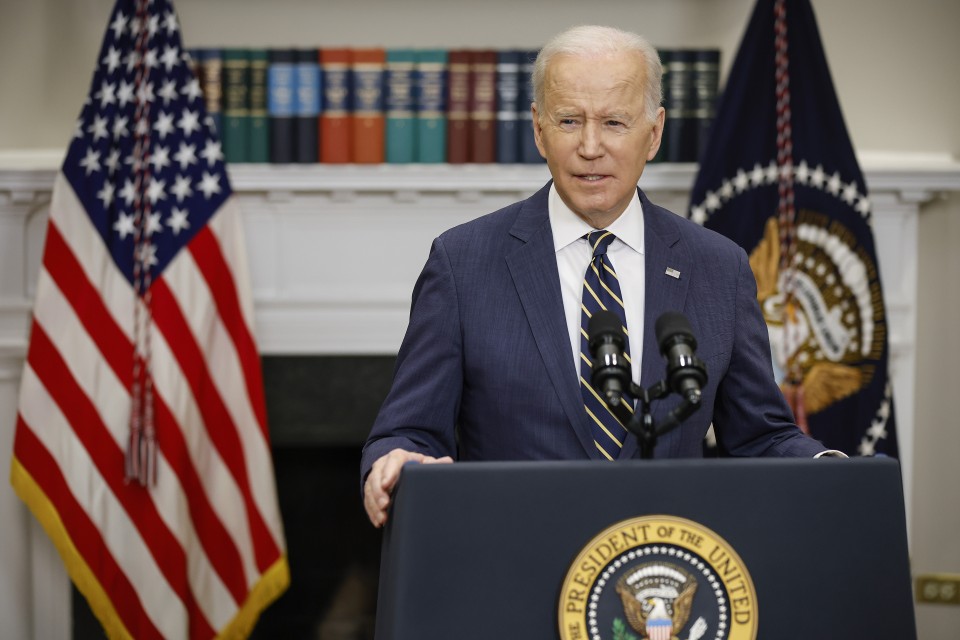[ad_1]
The U.S. administration of President Joe Biden on Monday released a $5.8 trillion budget proposal for fiscal 2023, featuring what it calls one of the largest investments in national security in the country’s history amid threats posed by Russia and China.
The budget plan also included a 20 percent minimum tax rate on U.S. households worth more than $100 million, as part of efforts to increase state revenue to put toward cutting deficits and improving the country’s long-term fiscal outlook.

U.S. President Joe Biden announces new economic actions against Russia over its invation of Ukraine at the White House on March 11, 2022 in Washington. (Getty/Kyodo)
The proposed budget for the year starting Oct. 1 earmarked $813.3 billion for national defense, up 4 percent from the previous year and of which $773.0 billion is bound for the Defense Department.
The figure included $130.1 billion for research and development — an all-time high for such a request from the Pentagon — amid efforts to improve capabilities in areas such as artificial intelligence and cyber warfare.
“This will be among the largest investments in our national security in history. Some people don’t like the increase, but we’re in a different world today,” Biden said as he announced his proposal.
While recognizing that Russia poses an “acute threat” to the world order as illustrated by its invasion of Ukraine, Deputy Defense Secretary Kathleen Hicks said the defense investment will be made based on the view that China is “our most consequential strategic competitor and pacing challenge.”
A total of $34.4 billion in funds were sought to modernize the nuclear “triad” of ballistic missile submarines, bombers and intercontinental ballistic missiles, while $24.7 billion was allocated to beef up missile defense including $892 million to defend Guam against threats from Chinese missiles.
The Pentagon also requested $7.2 billion to put toward its long-range attack capacity, aiming to field land-based hypersonic missile batteries by fiscal 2023 and such missiles aboard Navy vessels by fiscal 2025.
A total of 61 new F-35 stealth fighter jets were requested by the Pentagon, down from the 85 it requested last year.
The Defense Department also sought $6.1 billion for an initiative to bolster deterrence in areas of the Indo-Pacific that are facing Beijing’s assertiveness. It aims to see investment in new missile warning and tracking architecture, the defense of Guam, and multinational information sharing, training and experimentation.
With Russia’s attack on Ukraine entering its second month, the budget included $6.9 billion to support U.S. allies and partners in Europe and provided nearly $1 billion in assistance to Ukraine to meet needs related to security and macroeconomic stabilization, among other issues.
The budget request was finalized before Russia’s invasion of Ukraine started on Feb. 24, according to the Defense Department.
The president’s overall budget request is down 1 percent from the previous fiscal year.
The country’s deficit, which has increased amid the coronavirus pandemic, is expected to fall to $1.2 trillion in fiscal 2023 compared with $1.4 trillion in fiscal 2022 and $2.8 trillion in fiscal 2021, according to the budget request document.
The deficit is projected to total $14.4 trillion over the 10 years through fiscal 2032.
Related coverage:
Biden slams Putin as he rallies free world to support Ukraine’s fight
Biden, Kishida agree to hold N. Korea “accountable” after ICBM test
Biden warns Xi of “consequences” if China supports Russia on Ukraine
[ad_2]
Source link















